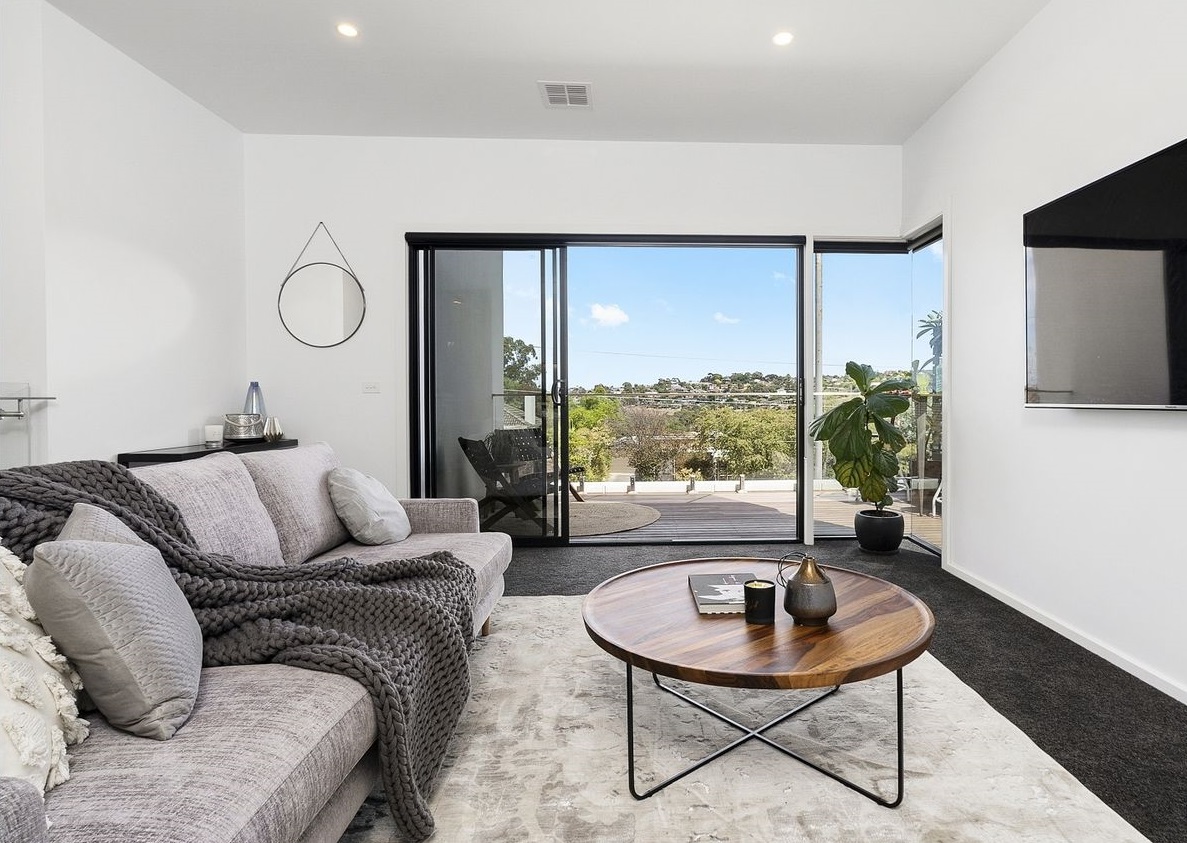How to Create a Focal Point in Any Interior

As one of the most fundamental aspects of any room, a focal point is meant to immediately draw people in and frame the space in a way that is both inviting and captivating. You can create a focal point in any room by using either existing architectural elements or decorative additions.
Depending on the space, some areas will have a built-in focal point, which makes it easier to decorate the room. Windows, especially those with a view, fireplaces, vaulted ceilings and angled walls are typically referred to as ‘built-in’ focal points.
If you have one of these, all you need to do is design the space in a way that accentuates those features. Here are some tips for highlighting architectural elements to create a focal point.
Play Up Existing Architectural Elements
- If you have a fireplace, use a statement piece above the mantle to emphasise it further and make sure you arrange the seating area around the fire to capture the grounding element a fireplace brings.
- If you have an angled wall, use a different colour wall paint, wallpaper or mirrors to create an eye-catching accent wall.
- If you have a lower ceiling, then one of the best ways to open up space is by painting the ceiling a lighter colour to make an area look larger. While if you have vaulted ceilings, your space will already feel vast with an element of grandeur, but painting the ceiling darker can make a vaulted ceiling less colossal.
- A beautiful chandelier or plaster designs can bring attention upwards, adding a wow factor without detracting from the other elements.
If your space doesn’t have any fitted features that can be taken advantage of, you will have to get creative through interior decorating.
There are many ways to do this, so there is no need to worry. We have compiled a list of our favourite additions.
Use Decorative Additions to Create a Focal Point
Feature Walls
Accent walls have always been a familiar option for creating a focal point. Generally speaking, the accent wall should be the furthest wall from the room’s entry point. A bold paint colour, patterned wallpaper or different texture/material will most certainly draw attention.
Backsplash Tiles
A tile backsplash, in either a bold colour or pattern, is the best choice to create a focal point in kitchens and bathrooms. There are numerous options to choose from as tiles come in so many different materials, cuts, colours, and designs.
Statement furniture
Do not underestimate what a statement piece of furniture can do. A unique piece of furniture can make a compelling focal point, especially in living rooms and bedrooms. If your space uses mainly light colours, try choosing a print or bold colour for a pronounced accent.
Soft furnishings
Mirrors, decorative elements and accents, including rugs, textured throws, and cushions can add texture and create a cozy environment. You will need to think about colours and hues that work with your furniture.
Artwork
A statement piece of art can make a room go from boring to sophisticated. When choosing a piece of art as your focal point, ensure you get one that is just right. Although this may seem intuitive, make sure you have taken measurements of the available wall space as a piece that is too small or too big won’t be able to serve its purpose. Additionally, ensure you choose artwork that complements the room’s interior style.
Mistakes To Avoid
Now that you know how to create a focal point, it’s good to keep a note of traps you should avoid. We have compiled a few of the most common mistakes that can detract from a room’s design.
More than one focal point
If a room or space serves more than one purpose, avoid creating two focal points. Ask yourself what is the primary function of the room, and then create the focal point as part of the primary purpose.
Framing the area
Even if your room has a built-in focal point, you will still have to add extra elements to ensure you draw attention to those feature with additional design elements to frame the area.
Lighting
Every focal point should have its lighting source to enhance both decorative additions and existing architectural elements.
Don’t Hesitate to Hire Professionals
DIY is a great way to get creative and can be heaps of fun, but sometimes hiring a professional is the better idea. If you don’t have the experience or expertise, then you are probably better off finding a service that can fulfil your requirements.
Read More:
An Introduction to Interior Design Styles: Part 1
An Introduction to Interior Design Styles: Part 2
Use Colour to Alter the Mood of Your Home: Start With These 4 Hues

